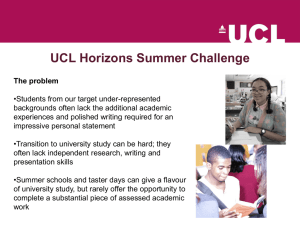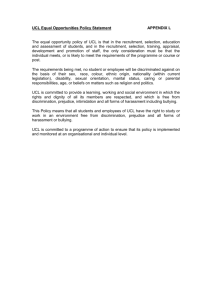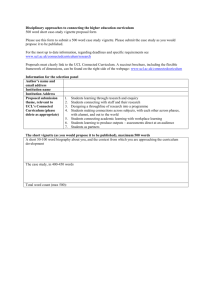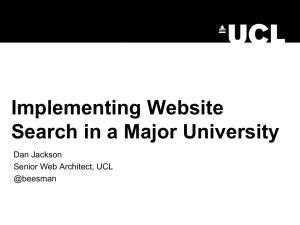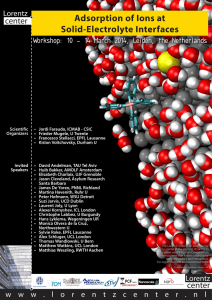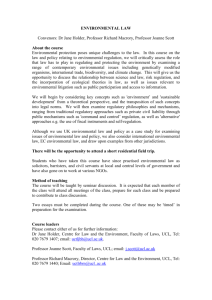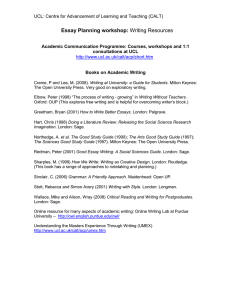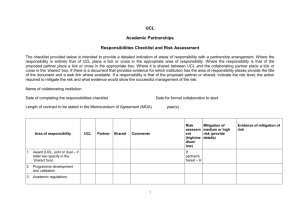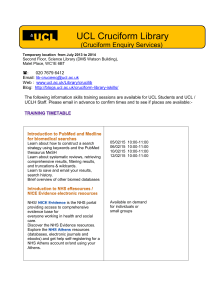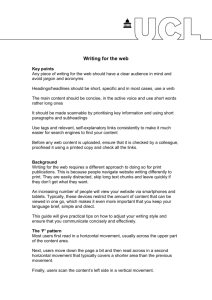UCL - IP Conference 2014
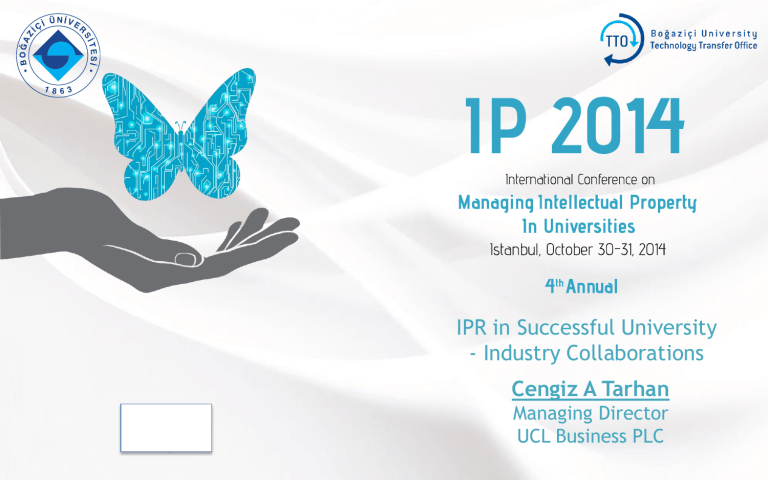
Company
Logo
IPR in Successful University
- Industry Collaborations
Cengiz A Tarhan
Managing Director
UCL Business PLC
O ve r v i e w
UCL
Enterprise at UCL – role of UCLB
Why we collaborate
Recent examples
Summary
Established over 180 years ago
First university in England to
admit students of any race, class or religion,
welcome women on equal terms
teach experimental science, modern European languages, Laws…
Today – over 4000 researchers and
Ranked 5th in the QS World University rankings for 2014 and 20th in the
Academic Ranking of World Universities - 2014 ( 3rd in Europe)
Exceptional strength in BioMedicine
O ve r v i e w
“UCL ranked the leading institution in the UK as a partner for industry in the biotechnology and pharmaceutical sectors”
May 2013
E nte r p r i s e at U C L i s e vo l v i n g
W hy we c o l l a b o rate w i t h I n d u st r y
It makes sense
Best universities and best companies do
Symbiotic relationship – should be two way
Helps achieve our mission to make IMPACT
But;
Pick your partners well
Protect your reputation
Remain flexible on terms
Document the arrangement
Manage the relationship
E x a m p l e s o f c o l l a b o r a t i o n w i t h I n d u s t r y a t U C L
Direct
Studentships – beware of IP leakage
Consultancy – IP rights defined within agreement
Contract research – usually IP vested in company
Collaborative research – complex IP negotiation
Strategic partnerships – multiple programs
Indirect
Through UCL’s spin out companies
Through our partner hospitals
W h e n I P i s I nvo l ve d
Overvaluing IP
Undervaluing IP
Warranties and indemnities
Access to Background IP
Licensing versus assigning
Ownership of Arising/Foreground IP
Money – costs/upfront/milestones/royalties
Termination – what happens to IP
And more!
Recent examples of collaborative research at UCL
Eisai – drug discovery alliance
Pfizer – collaboration on stem cell- based technology
Novozymes BioPharma – combining technology platforms
Cell Therapy Catapult – treatment for leukaemia
Novo Nordisk – mapping diabetes
Takeda – tackling muscle disorders and muscular dystrophy
U n l o c k i n g the potential of C a r b o n N a n o t u b e s
Most high tech displays and touchscreens are made of transparent conductive film which requires Indium Tin Oxide (ITO)
Costs of processing ITO are high and screens tend to be brittle – not suitable for flexible displays.
Collaboration with Linde is based on developing a solution to use
Single walled carbon nanotubes (SWCN) as an alternative.
U n l o c k i n g the potential of C a r b o n N a n o t u b e s
Researchers at UCL identified a way of purifying the SWCN’s to make them useful for new generation flexible screens.
U n l o c k i n g the potential of C a r b o n N a n o t u b e s
Patent protection secured
Licence to Linde Group in 2011
Linde Nanomaterials formed in 2012 with manufacturing facility in San Marcos, California
SEER eInk launched in 2013
Potential highlighted in Touch Display Research Inc., ITOreplacement report, May 2014) estimating non ITOtransparent conducting films market is likely to be worth
$8.1billion by 2021
S u m m a r y
UCL is committed to Enterprise to deliver IMPACT
Engagement with Industry is crucial
IPR plays an important role
It’s a relationship with ‘ups and downs’
Successful relationship needs to be ‘managed’
